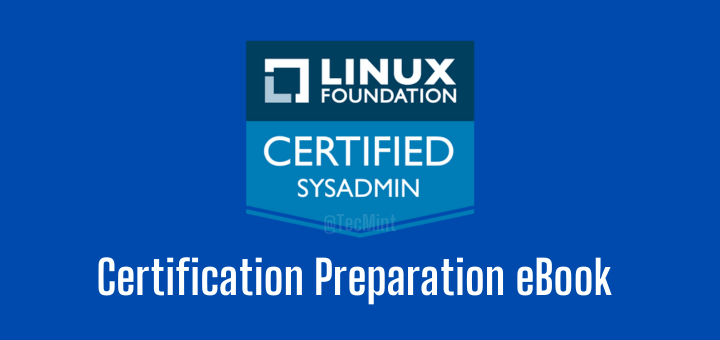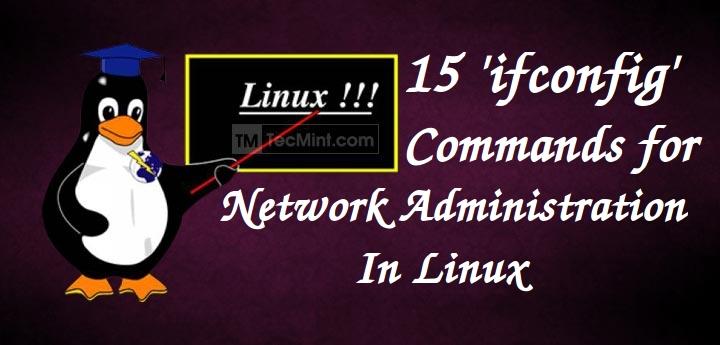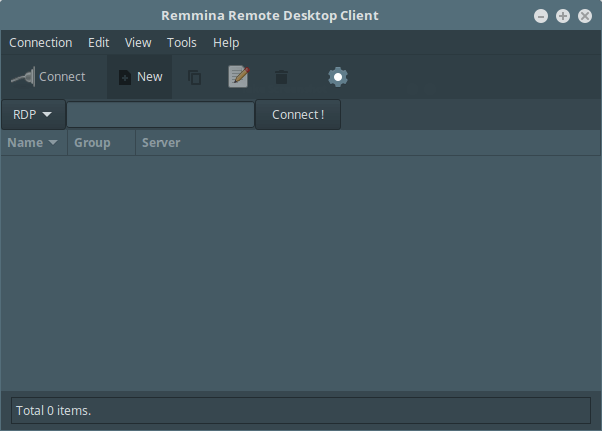
For years, certifications in the Information Technology world have helped job candidates demonstrate their skills to potential employers.
In the Linux world, this is as true as in any other area, with businesses primarily looking for certified candidates to fill available vacancies. In other words, certifications are a proven way of gaining an advantage when applying for a job.
Since August 2014 you don’t have to travel to a testing center and spend a lot of money in associated expenses to take a certification exam.
Thanks to the Linux Foundation, you can aspire to a world-class certification by taking a monitored online exam from the comfort of your own home.
The Linux Foundation Certified System Administrator (LFCS) is a certification exam offered by The Linux Foundation, which is a performance-based exam that tests your knowledge of Linux system administration and helps you advance your career in Linux.
If you are interested in becoming LFCS certified, I encourage you to start preparing today.
We at Tecmint.com have put together 33 chapters covering the topics required in both exams and reviewed them taking into consideration the many comments we have received over the last 5+ years.
Also, we do our best to keep the book updated with the latest modifications that have been made to the domain competencies of both exams. The last revision of this material on May 11, 2023, which is announced by the Linux Foundation.
What’s inside LFCS eBook?
We are now pleased to present to you those 33 exam objectives with 340+ pages in this ebook (PDF format). That was a constantly-repeated request over that same period – you spoke, and we listened!
LFCS Section (Chapters 1 to 33)
The LFCS Certification Preparation eBook covers all of these topics in detail that includes step-by-step instructions, screenshots, and practice exercises.
- Chapter 1: Processing Text Streams in Linux
- Chapter 2: Learn Vi/Vim as a Full-Text Editor
- Chapter 3: Archiving and Compression Tools / Basic File Permissions and Attributes
- Chapter 4: Partitioning Storage Devices, Formatting Filesystems, and Configuring Swap Partitions
- Chapter 5: Setup Network Share (Samba & NFS) File-Systems
- Chapter 6: Assembling Partitions as RAID Devices
- Chapter 7: Manage System Services with SysVinit, Systemd, and Upstart
- Chapter 8: Managing Users & Groups and Enabling sudo Access
- Chapter 9: Package Management with Yum, RPM, Apt, Dpkg, Aptitude, and Zypper
- Chapter 10: Learning Basic Shell Scripting and Troubleshooting
- Chapter 11: Manage and Create LVM Partitions
- Chapter 12: Linux Help Documentations and Tools
- Chapter 13: Configure and Troubleshoot Grand Unified Boot-loader (GRUB)
- Chapter 14: Monitor Linux Processes Resource Usage
- Chapter 15: Set Kernel Runtime Parameters in Linux
- Chapter 16: SELinux and AppArmor
- Chapter 17: Set Access Control Lists (ACLs) and Disk Quotas
- Chapter 18: Setting Up Network Services NFS, Apache, Squid+SquidGuard, Postfix+Dovecot
- Chapter 19: Setting Up FTP Server to Allow Anonymous Logins
- Chapter 20: Setup Recursive Caching DNS Server
- Chapter 21: Installation and Configuration of MariaDB Database Server
- Chapter 22: Configuring NFS Shares with Autofs
- Chapter 23: Setup Apache SSL with Name-Based Virtual Hosting
- Chapter 24: Setup an Iptables Firewall
- Chapter 25: Static and Dynamic Routing
- Chapter 26: Encrypted Filesystems and Swap Space
- Chapter 27: System Usage, Utilization, and Troubleshooting
- Chapter 28: Setting up a Network Repository
- Chapter 29: Network Performance, Security, and Troubleshooting
- Chapter 30: Managing and Configuring Virtual Machines and Containers
- Chapter 31: Learn the Basics of Git to Manage Projects Efficiently
- Chapter 32: Configure IPv4 and IPv6 Networking and Hostname Resolution
- Chapter 33: Configure Bonding and Bridge Devices
Each chapter demonstrates crucial topics and relevant exam objectives in the beginning and ends with a summary followed by questions and answers.
Additionally, you will notice that we kept some chapters from the previous edition even when those topics are not included in the exams anymore (FTP and database servers are two examples) as a bonus.
If you are serious about becoming a Linux system administrator, then the LFCS Certification Preparation eBook is a must-have resource. It will help you prepare for the exam and give you the skills you need to be successful in your career.
The LFCS eBook is available now for purchase. Order your copy today and start your journey to becoming a certified Linux system administrator!
Last, but not least, please consider buying your exam voucher using the following links to earn us a small commission. This will help us keep this book updated.
With your purchase, you will also be supporting Tecmint.com and helping us to continue providing high-quality articles on our website for free, as always.




